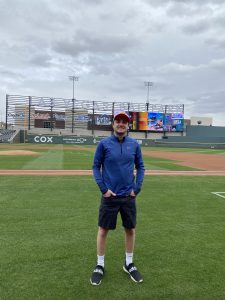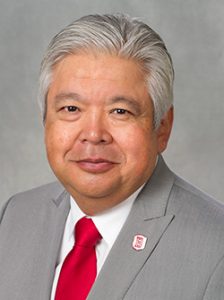To contract Ebola, one must come in direct contact with bodily fluids of someone who is already sick with the disease.
In 1976, an extremely infectious disease was discovered near the Ebola River in Zaire (now the Democratic Republic of Congo). Its outbreak spread to nearly 320 people and killed 280. Thirty-eight years later, the United States announced its first case of Ebola when a man who had traveled from Liberia to Dallas, Texas developed symptoms of the disease upon his return.
The College of Education and Health Sciences invited Dr. Marc Carrigan of Methodist Family Medicine Residency to Neumiller Lecture Hall Thursday night to lead a discussion on the Ebola crisis, its history and how it can be prevented.
Having performed medical services in nine countries, four of which are in Africa, Dr. Carrigan offered insight into the disease and what could be done to prevent it from spreading.
“Don’t think of movies like ‘Contagion’ or someone sneezing in an airport [as how Ebola is spread],” he said. “Typically someone is not infectious until they develop a fever, which is not a specific symptom [of Ebola].”
Dr. Carrigan said the only way someone can know if a patient has Ebola for sure is by studying his or her exposure history. According to Mayo Clinic, Ebola symptoms in the initial stages present issues such as severe headaches, fevers, joint aches and muscle weakness. These symptoms become more severe as time passes, presenting problems such as severe weight loss, bleeding (usually from the eyes), red eyes and internal bleeding.
Ebola is extremely rare in the United States. According to the Centers for Disease Control and Prevention, there have only been four laboratory-confirmed cases and one death from Ebola as of Nov. 12. This is not comparable to the 4,523 laboratory-confirmed cases in Sierra Leone or the 2,836 deaths from Ebola in Liberia.
Students in attendance said the presentation shined a light on a relevant and important topic.
“I thought the presentation was very informative,” senior nursing major Dayna Martino-Calamus said. “Practically learning about the origin of the disease and how the virus got its name lessened my fear about the disease.”
As treatments for Ebola such as Zmapp and TKM-Ebola continuously evolve, Dr. Carrigan encouraged proper hydration and nutrition, management of blood pressure and repeated testing to catch early symptoms of the disease.
“It is highly unlikely Ebola will spread widely in the United States,” Dr. Carrigan said. “We have state-of-the-art healthcare, and we’re able to track those cases down and treat them immediately.”
To learn more about Ebola, visit the Centers for Disease and Prevention’s website at www.cdc.gov.








